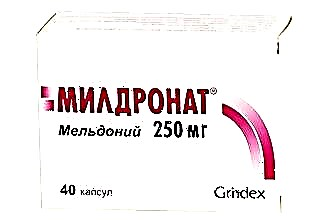Many pathological processes in the body are accompanied by impaired voice function. In this case, a change in voice can be characterized as dysphonia, a violation of the timbre, or its absence, aphonia.
With dysphonia, the voice becomes hoarse or hoarse, there is a change in range, strength, and its rapid fatigue.
The development of such a symptom may be based on inflammatory processes, and then we are talking about organic dysphonia. In other cases, a functional disorder develops that is not associated with an inflammatory or infectious process, one of the varieties of which is hypotonic dysphonia.
Characteristic signs
 The process of sound reproduction takes place in the larynx. Voice communications located in its middle department are directly involved in this. Their movement creates the necessary sound wave. Incomplete closure of the vocal cords as a result of various reasons leads to the development of dysphonia. The complete absence of a voice is due to the impossibility of their closing.
The process of sound reproduction takes place in the larynx. Voice communications located in its middle department are directly involved in this. Their movement creates the necessary sound wave. Incomplete closure of the vocal cords as a result of various reasons leads to the development of dysphonia. The complete absence of a voice is due to the impossibility of their closing.
Hypotonic dysphonia is a condition that develops as a result of incomplete closure of the vocal cords due to a decrease in muscle tone. Among functional disorders, a decrease in muscle tone is the most common cause of the development of a pathological condition, which occurs in 70% of patients. Symptoms of hypotonic dysphonia characterize a violation of the sound-reproducing function of the larynx. The most typical signs are:
- hoarseness and hoarseness of the voice;
- reduction of the voice range;
- fatigue from talking;
- decrease in the strength of the voice, after a short time the patient switches to a whisper.
Predisposing factors
The reasons for the development of this functional disorder may be due to congenital, anatomical, constitutional features of the structure of the patient's sound apparatus. The following pathological conditions are a contributing factor:
- asthenic syndrome;
- long-term observance of the silence regime;
- neurological pathology;
- old age of the patient;
- a history of operations on the thyroid gland or larynx.
Diagnostics
The diagnosis of functional dysphonia is facilitated by its long-term course. If a violation of the voice-forming function of the larynx is noted within weeks, months, years, it should be assumed that this is the nature of the pathology. It is characterized by deterioration at the end of the day, as well as after acute respiratory diseases and laryngitis.
Organic lesion of the vocal cords is characterized by a more acute development of symptoms. The results of an objective study indicate the presence of an inflammatory process localized in this area.
Swelling and hyperemia of the vocal cords, revealed by laryngoscopy, is evidence of organic damage.
In favor of hypotonic dysphonia is evidenced by incomplete closure of the glottis, detected during microlaryngoscopy, if there is no data on the inflammatory nature of the lesion.
To clarify the nature of changes in the vocal cords, you need to consult an otolaryngologist. It is such a specialist who will be able to conduct an endoscopic examination of the larynx. In difficult cases, to exclude organic, including tumor, nature of the lesion, computed tomography can be performed.
When objectively assessing the state of the voice, the phoniatrist pays attention to its timbre, strength, as well as diction, the nature of articulation. To assess the functional state, a stress test can be offered, which will determine the rapid fatigue from a conversation. (Reading aloud for half an hour will reveal increased fatigue, a change in timbre). Conducting computer analysis of the voice helps to clarify functional disorders. This technique allows you to objectively assess the change in voice characteristics.
Treatment principles
 Functional dysphonias are reversible. However, with a prolonged course, they can lead to the development of organic damage. A decrease in the tone of the muscles of the vocal cords over time contributes to the development of atrophic laryngitis and persistent aphonia. The approach to the treatment of hypotonic dysphonia should be comprehensive, including both medications aimed at increasing the tone of the muscles of the vocal cords, and measures that contribute to increasing the endurance of the sound-reproducing organ, increasing its effectiveness.
Functional dysphonias are reversible. However, with a prolonged course, they can lead to the development of organic damage. A decrease in the tone of the muscles of the vocal cords over time contributes to the development of atrophic laryngitis and persistent aphonia. The approach to the treatment of hypotonic dysphonia should be comprehensive, including both medications aimed at increasing the tone of the muscles of the vocal cords, and measures that contribute to increasing the endurance of the sound-reproducing organ, increasing its effectiveness.
Medicines used to treat this pathological condition include groups of drugs with a tonic effect:
- tincture of eleutherococcus;
- B vitamins;
- Proserin, a drug that increases the tone and contractility of the smooth muscles of various organs, facilitates neuromuscular transmission.
The use of Proserin should be carried out in a short course - no longer than two weeks, since an overdose of the drug can worsen the condition, lead to a persistent decrease in the tone of the muscular apparatus.
Non-drug treatments include:
- gymnastic exercises to improve articulation;
- physiotherapy procedures (diadynamic currents, amplipulse, electrophoresis);
- acupuncture.
Phonopedic training
The main method of non-drug treatment of functional dysphonia is phonopedia, a set of exercises aimed at improving vocal function. Phonopedic training is aimed at activating the work of the vocal apparatus. These activities teach the correct positioning of the head, which ensures the most effective sound reproduction, as well as the necessary breathing pattern, which helps to increase the tone and relaxation of the muscles of the vocal apparatus. Long-term pronunciation of the sound "m" is recommended for patients, since such an exercise contributes to learning comfortable sound reproduction with minimal stress on the vocal cords.
Speech therapists have developed a large number of exercises aimed at training the vocal apparatus. They consist in the repeated repetition of a certain sequence of sounds. In recent years, much attention has also been paid to the method of combined use of the vocaSTIM apparatus, which carries out neuromuscular stimulation, and phonopedic exercises.
Preventive actions
An important part of complex treatment is the implementation of preventive and restorative measures. Patients with a voice disorder must adhere to certain rules:
- eliminate bad habits, smoking and alcohol abuse;
- avoid overstrain of the muscular apparatus;
- prevent overdrying of mucous membranes;
- avoid coughing and any inflammatory and infectious processes in the throat;
- sanitation of concomitant diseases, especially those localized in the oral cavity, throat, as well as reflux esophagitis, should be carried out.
Regular inhalation of hazardous impurities, chemical compounds, nicotine contributes to the development of the inflammatory process in the larynx. With a reduced tone of muscle fibers, such negative factors can significantly aggravate the situation. Dry air also has an irritating effect on the mucous membrane, and, therefore, moisturizing the throat and maintaining sufficient humidity in the room are a prerequisite for preventing the development of pathology.
Severe cases are an indication for surgical treatment. However, this method is used only in the absence of a result from the therapeutic techniques proposed by phoniatrists, speech therapists, psychotherapists, endocrinologists. Phonosurgery includes both interventions on the vocal cords and operations on the larynx itself.
Operation on the vocal cords is dangerous for its complications, since there is a risk of their subsequent scarring and stenosis. Thyroplasty is devoid of this drawback, an operation that affects the cartilage of the larynx and aims to improve the closure of the vocal cords.



